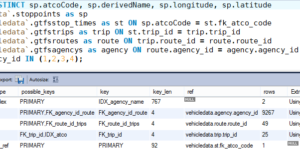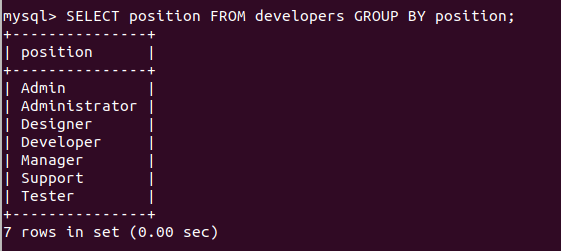
Offset specify the number of records to skip before starting to return the records db.Limit( 3).Find(&users)ĭb.Limit( 10).Find(&users1).Limit( -1). Limit specify the max number of records to retrieve SELECT * FROM users ORDER BY FIELD(id,1,2,3) When the destination object has a primary value, the primary key will be used to build the condition, for example: var user = User,

If the primary key is a string (for example, like a uuid), the query will be written as follows: db.First(&user, "id = ?", "1b74413f-f3b8-409f-ac47-e8c062e3472a") SELECT * FROM users WHERE id IN (1,2,3) When working with strings, extra care needs to be taken to avoid SQL Injection check out Security section for details. Objects can be retrieved using primary key by using Inline Conditions if the primary key is a number. SELECT * FROM `languages` ORDER BY `languages`.`code` LIMIT 1 no primary key defined, results will be ordered by first field (i.e., `Code`) works because model is specified using `db.Model()` SELECT * FROM `users` ORDER BY `users`.`id` LIMIT 1 works because destination struct is passed in Additionally, if no primary key is defined for relevant model, then the model will be ordered by the first field. It is a GROUP BY function which returns a string if the. They only work when a pointer to the destination struct is passed to the methods as argument or when the model is specified using db.Model(). GROUPCONCAT is a function which concatenates/merges the data from multiple rows into one field.


The First and Last methods will find the first and last record (respectively) as ordered by primary key.
#MYSQL COUNT DISTINCT GROUP BY FULL#
Using Find without a limit for single object db.Find(&user) will query the full table and return only the first object which is not performant and nondeterministic If you want to avoid the ErrRecordNotFound error, you could use Find like db.Limit(1).Find(&user), the Find method accepts both struct and slice data Note: The example above will not work in Firefox Because COUNT(DISTINCT columnname) is not supported in Microsoft Access databases. Result.RowsAffected // returns count of records foundĮrrors.Is(result.Error, gorm.ErrRecordNotFound) SQL Count DISTINCT Group By If you want to know how many different productswith unique product IDs each vendor brought to market during a date range. SELECT * FROM users ORDER BY id DESC LIMIT 1 Get last record, ordered by primary key desc SELECT * FROM users ORDER BY id LIMIT 1 Syntax: COUNT (DISTINCT expr, expr. Get the first record ordered by primary key MySQL COUNT (DISTINCT) function returns a count of number rows with different non-NULL expr values. Here is the table that shows the order in which the clauses are used.GORM provides First, Take, Last methods to retrieve a single object from the database, it adds LIMIT 1 condition when querying the database, and it will return the error ErrRecordNotFound if no record is found. Like how we plan something step by step and reach the final result, similarly, we use clauses in a particular order known as the SQL query execution order. We can also use this clause with MAX() function to return the maximum.

SQL query execution order means optimizing our search results from the database or where the query clauses are evaluated according to the requirements. MySQL uses the DISTINCT keyword to remove the duplicate rows from the column name. Here comes the SQL query execution order, sometimes also called SQL order of operations, so that the data we are looking for is retrieved in the most optimized way and takes the least execution time possible. Example: The following MySQL statement will show number of author for each country.
#MYSQL COUNT DISTINCT GROUP BY HOW TO#
We want our results to be optimized without wasting any time and not in a tedious manner. In MySQL DISTINCT Clause can be used within an MySQL statement to remove duplicate rows from the databse table and retrive only the unique data. MySQL COUNT () function with group by Last update on Aug21:50:42 (UTC/GMT +8 hours) COUNT () function with group by In this page we have discussed how to use MySQL COUNT () function with GROUP BY. DISTINCT can be used with the COUNT() function to count how many distinct. In this digital era, we don't want to waste our time searching for names having salaries above Rs.10000. For such a query, GROUP BY just produces a list of distinct grouping values. This order of execution is known as SQL query execution order. A particular order must be followed to execute these clauses to obtain correct results. SQL queries are made up of one or more clauses. SQL queries are used to access a set of records present in our database tables.


 0 kommentar(er)
0 kommentar(er)
